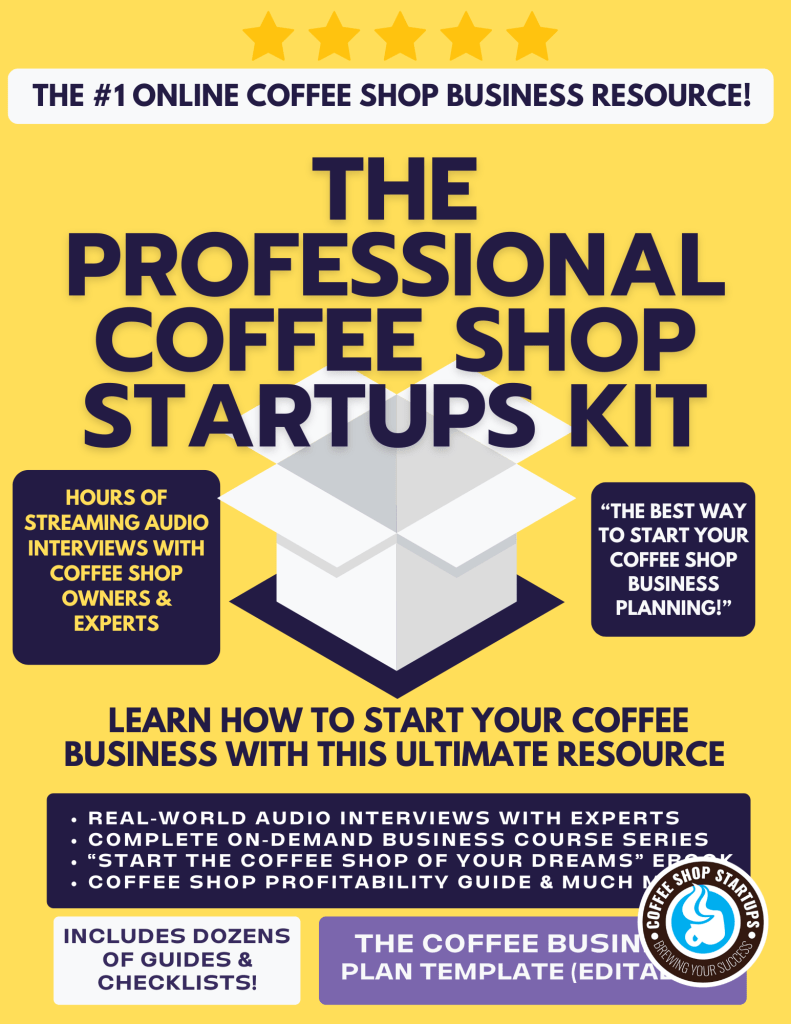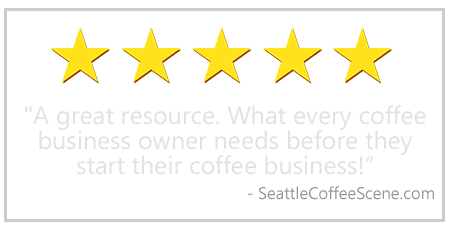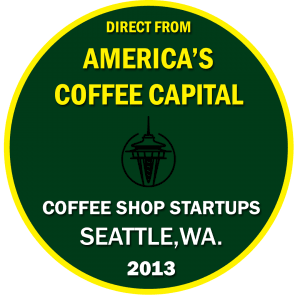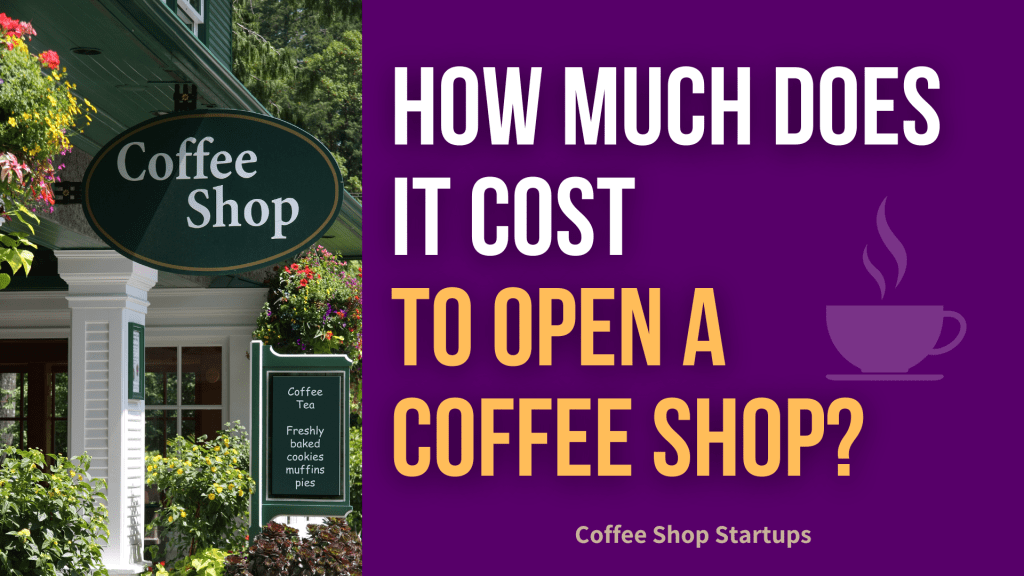
The Cost to Open a Coffee Shop?
Your Coffee Shop Cost Breakdown
 Among the first questions to consider before opening a coffee shop is determining how much it will cost.
Among the first questions to consider before opening a coffee shop is determining how much it will cost.
Your total cost to start a coffee shop ultimately depends on your business concept and menu, along with other important factors we’ll discuss in this article.
Starting a coffee shop can be an exciting venture, but it's crucial to understand the financial commitments involved. From leasing a suitable location to purchasing high-quality equipment, the costs can add up quickly.
In this article, we'll break down key expenses to help you plan your coffee shop startup budget with confidence.
Your Coffee Shop Cost Factors
Every coffee shop has unique financial demands based on location, size, and concept. Whether you're aiming for a cozy neighborhood café or a high-traffic downtown spot, it's essential to identify the factors that will influence your startup costs. In this section, we'll explore the critical cost factors to consider when planning your coffee shop business.
The first answer starts with your type of coffee business. For example, do you want to open a drive-thru coffee stand, a cafe roastery, a wine and coffee shop, or a coffee truck?
All of these answers will impact your total coffee shop startup costs. So, let’s discuss those basic elements that make up most of the costs for your future coffee shop.
Coffee shop costs depend on the following:
- Your concept
- Coffee shop menu
- Coffee equipment
- Physical location
- Build out & remodeling
- Labor costs
- Your legal & administrative costs
- Branding & marketing choices
- Furniture & fixtures
- Other additional costs based on your personal situation or location
These costs, taken together, can add up quickly. Nevertheless, you must tally up all of these costs and create a working coffee business budget. Throughout the process, it’s important to maintain honesty with yourself about the cost of each element and ensure that you include them within your budget.
The more you know, the better you will manage the costs of starting your coffee shop.
![]()
How much does it cost to start a coffee shop?
Coffee Shop Cost Estimates Based on Your Concept
Each type of coffee business has a general price estimate. It is important to note that many costs aren’t always paid upfront – on day one. Rather, costs are often paid over a certain period of time.
This is important because you probably will not need 100% of the money upfront. Your coffee shop concept and situation determine how much money you need upfront.
Let’s take a look at the general concepts and their cost breakdown below:
Traditional Coffee Shop Business Cost Estimates*:
- Small coffee shop with seating: $45,000 to $200,000
- Large coffee shop with seating: $75,000 to $350,000
- Franchise coffee shop: $125,00 to $350,000
- Café & Bakery: $125,000 to $350,000
- Coffee Shop Bookstore: $80,000 to $250,00
Low-Cost Coffee Shop Business Cost Estimates*:
- A piggyback coffee business: $5,000 – $15,000
- Drive-thru coffee stand business: $25,00 – $90,000
- Espresso catering business: $5,000 – $15,000
- Mobile coffee business: $15,000 – $95,000
- Online coffee business: $400 – $10,000
*Updated on September 21, 2023.
As you can see, depending on each type of coffee business you intend to open, you will experience various cost estimates. I want to emphasize that these are just rough estimates to give you a general sense of some of the expected startup costs you may encounter. How you plan to develop your budget and your coffee shop funding mix is a critical step before moving forward.
Menu and Equipment Costs
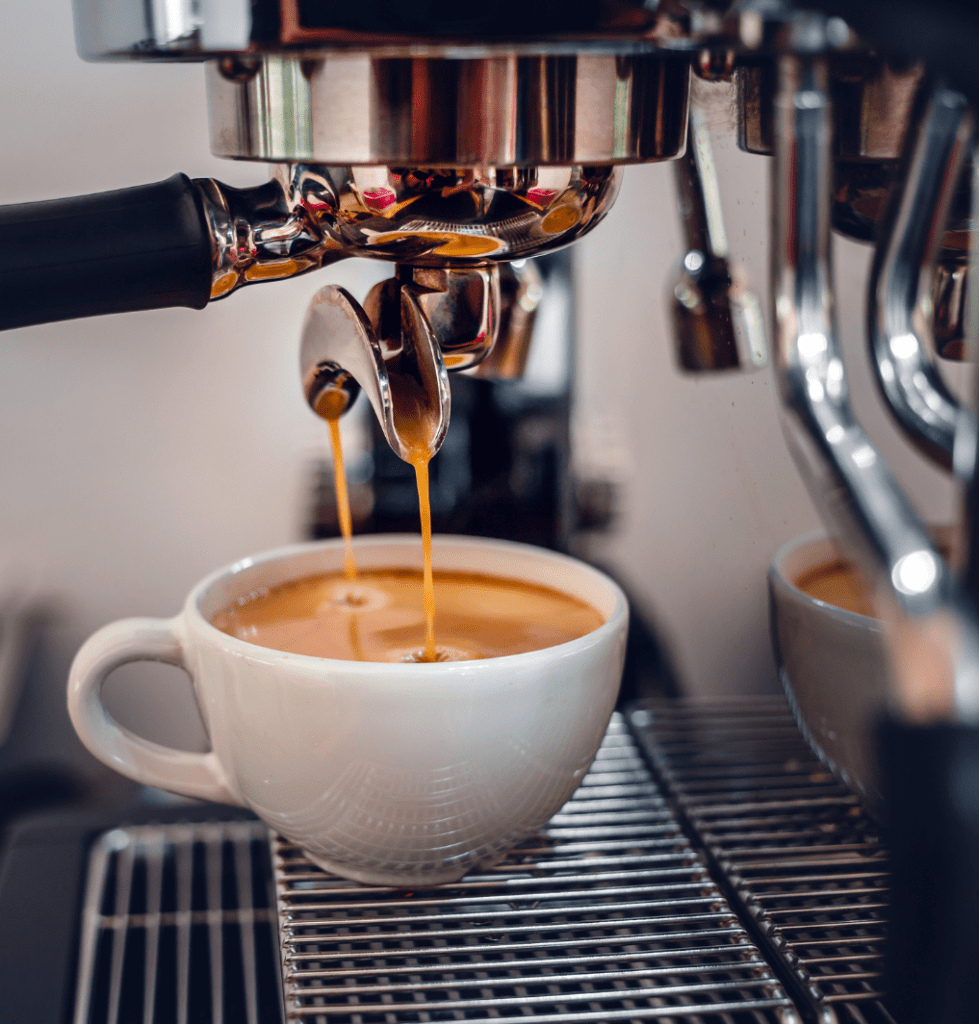 Coffee equipment is at the heart of every successful café, dictating the quality of your drinks and the efficiency of your operations.
Coffee equipment is at the heart of every successful café, dictating the quality of your drinks and the efficiency of your operations.
Whether you opt for top-of-the-line espresso machines or budget-friendly alternatives, the costs can vary significantly. In addition to the equipment, your menu choices—like offering specialty coffees, pastries, or food items—will impact your budget. This section will delve into the essential coffee equipment you'll need and explore how your menu decisions can affect your overall costs.
1. Espresso Machine
- Cost Range: $5,000 – $25,000
- Premium models for high volume may be more expensive.
2. Coffee Grinder
- Cost Range: $500 – $2,500
- Prices vary based on capacity and grinding precision.
3. Automatic Drip Coffee Maker
- Cost Range: $500 – $3,000
- Commercial-grade machines for batch brewing.
4. Commercial Blender
- Cost Range: $300 – $1,500
- For blended drinks like frappes and smoothies.
5. Refrigerator and Freezer
- Cost Range: $1,000 – $5,000
- Commercial refrigeration for milk, food, and other perishables.
6. Ice Maker
- Cost Range: $1,500 – $5,000
- Important for cold drinks and food storage.
7. Cash Register / Point-of-Sale (POS) System
- Cost Range: $500 – $3,000
- Your coffee shop POS system will include hardware and software for sales transactions.
8. Pastry Display Case
- Cost Range: $1,000 – $3,000
- For displaying and keeping baked goods fresh.
9. Dishwasher
- Cost Range: $1,500 – $7,000
- Commercial-grade for quick cleaning and sanitation.
10. Water Filtration System
- Cost Range: $500 – $2,000
- Ensures high-quality water for coffee brewing and equipment maintenance.
11. Seating and Tables
- Cost Range: $1,000 – $5,000
- Costs depend on the quality and quantity of furniture.
12. Miscellaneous Equipment and Utensils
- Cost Range: $200 – $1,500
- Includes items like tamper, frothing pitchers, measuring cups, etc.
These costs can vary depending on brand, capacity, and additional features. Although initial equipment costs can be high, investing in quality equipment can pay off in the long run.
Coffee Shop Location Costs
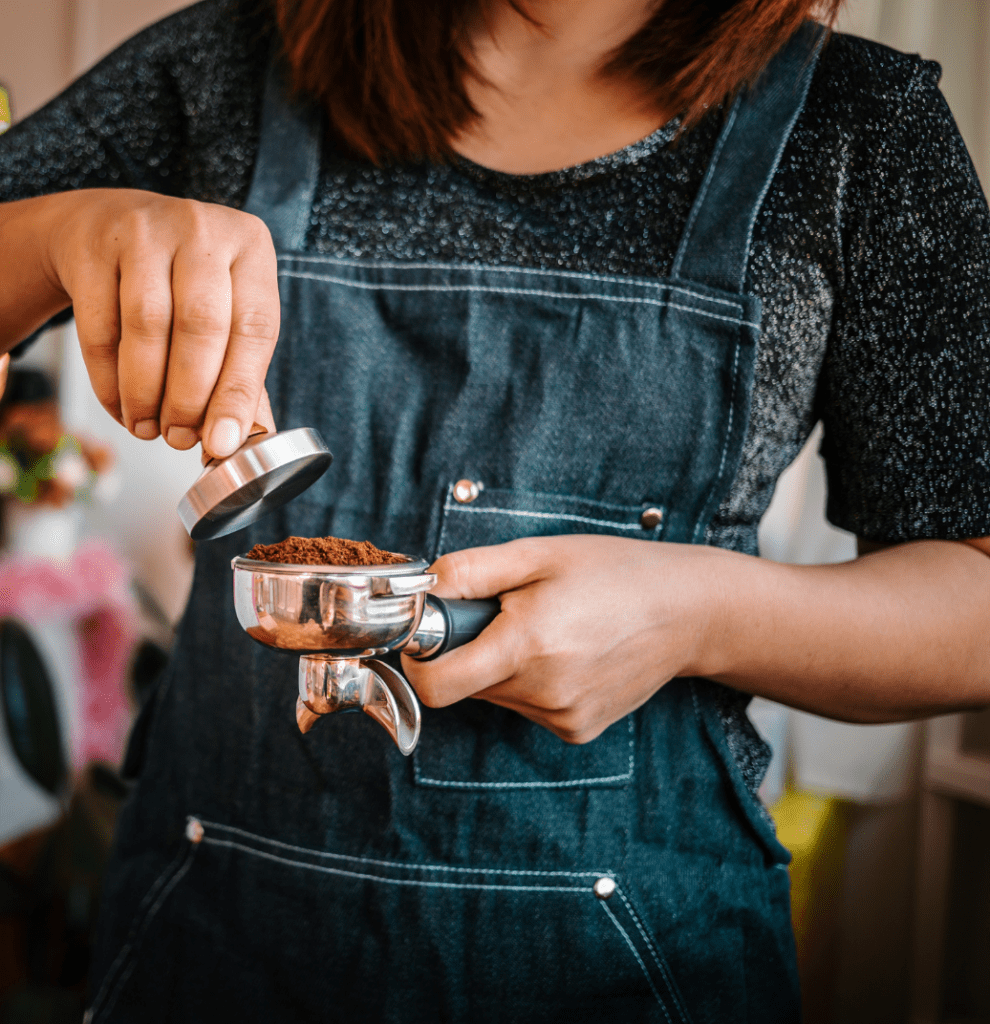 The location can drive up the cost of coffee shops. While, real estate costs vary by city or region. this tends to be the highest cost for many coffee businesses. In some parts of the country, you can expect to pay higher prices for your rent and associated expenses noted above compared with other parts of the country.
The location can drive up the cost of coffee shops. While, real estate costs vary by city or region. this tends to be the highest cost for many coffee businesses. In some parts of the country, you can expect to pay higher prices for your rent and associated expenses noted above compared with other parts of the country.
According to Zillow, the average percentage of your home rental cost should not exceed 30% of your income. However, this is a rule of thumb for your personal finances and should NOT be used as a benchmark for your coffee shop business. Your coffee shop location costs should be closer to 5% – 10% of your sales.
Estimated Costs: Rent can range from $1,000 to $10,000+ per month, depending on the city and neighborhood.
Leasehold Improvements
Explain the need for renovations to adapt the space for a coffee shop, including layout, plumbing, and electrical work.
Potential Costs: Remodeling expenses can vary widely, ranging from $20,000 to $100,000 or more, depending on the extent of the renovations and the quality of the materials used.
Coffee Shop Labor Costs
Labor costs are a significant component of running a coffee shop, encompassing much more than just hourly wages. To understand the full scope of these expenses, you need to consider the following elements:
Employee Wages
The base hourly wage for baristas and other staff can vary depending on location, experience, and minimum wage laws. In the United States, barista wages generally range from $10 to $20 per hour, with higher rates in urban areas or for more experienced staff.
Supervisors and managers usually earn higher wages, typically between $15 and $30 per hour, or they may receive a salary.
Employee Benefits
Benefits for coffee shop employees may include health insurance, retirement plans, paid time off, as well as other perks. Offering benefits can improve employee retention but also add to labor costs.
Benefits can add an additional 20% or more to the total labor costs.
Payroll Taxes and Withholding
Coffee shop employers are responsible for paying payroll taxes, including Social Security, Medicare, and state and federal unemployment taxes. These can add approximately 7-10% to total labor costs.
Employers must also withhold taxes for their employees, which requires time and administrative resources.
Training and Development
Coffee shops often require specific training for new hires, such as learning how to use espresso machines, making specialty drinks, and customer service skills.
The cost of barista training can vary depending on the complexity of the coffee shop job and the training program. It may include instructor fees, training materials, and reduced productivity during training periods.
Uniforms and Employee Supplies
Providing uniforms or aprons for employees contributes to labor-related costs. Additionally, other supplies like name tags, footwear, or specialized tools can increase costs.
These coffee shop employee expenses can range from $100 to $500 per coffee shop employee, depending on the quality and type of uniform.
Employee Scheduling and Overhead
Effective scheduling is crucial to managing labor costs. Overstaffing leads to increased costs, while understaffing can impact customer service.
Labor-related overhead includes costs like timekeeping software, scheduling tools, and administrative tasks associated with managing employees.
These components collectively create a broader picture of labor costs. While wages are often the largest expense, benefits, taxes, training, and other associated costs contribute significantly. When planning a coffee shop's budget, it's crucial to consider all these elements to ensure sustainable staffing and high-quality customer service.
Coffee Shop Branding and Marketing Costs
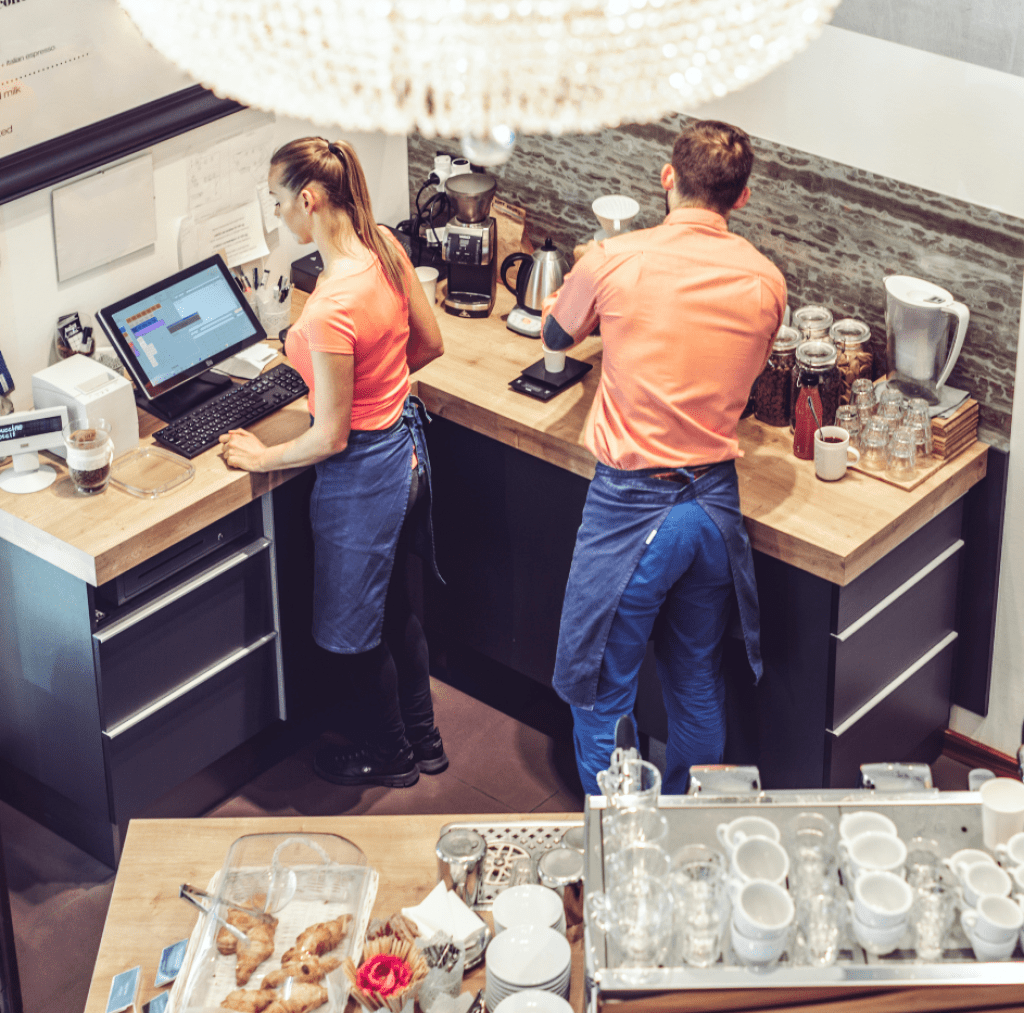 Marketing and branding are crucial for a successful coffee shop to stand out in a tough market, attract coffee shop customers, and build a loyal customer base. Here are the various components of marketing and branding, along with their potential cost ranges in dollars:
Marketing and branding are crucial for a successful coffee shop to stand out in a tough market, attract coffee shop customers, and build a loyal customer base. Here are the various components of marketing and branding, along with their potential cost ranges in dollars:
Logo Design and Branding
A unique logo and cohesive branding elements (color schemes, fonts, etc.) are the foundation of a coffee shop's identity.
- Cost Range: $500 – $5,000
- Costs vary based on the designer's experience and scope of work, including additional branding elements like menu design and packaging.
Signage and Exterior Branding
A well-designed sign helps attract foot traffic and establishes your coffee shop's presence.
- Cost Range: $1,000 – $10,000
- Prices depend on the size, materials, and complexity of the design, including illuminated signs.
Business Cards and Print Materials
Business cards, flyers, and other print materials are helpful for promotions and networking.
- Cost Range: $100 – $1,000
- Costs depend on quantity and print quality, with added expenses for design and printing services.
Website Development and Hosting
A professional coffee shop website is essential for attracting customers online, providing information, and offering online ordering.
- Cost Range: $500 – $5,000 for development; $50 – $500 per year for hosting
- Costs vary based on website complexity, custom features, and ongoing maintenance.
Social Media Marketing
Effective use to promote your coffee shop through social media platforms like Instagram, Tik Tok, and Facebook, can drive customer engagement and brand awareness.
- Cost Range: $100 – $2,000 per month
- This can include advertising costs, content creation, and potential fees for social media management services.
Grand Opening and Special Events
Hosting a grand opening or special events can generate buzz and attract new customers.
- Cost Range: $500 – $5,000
- The range depends on the scale of the event, including food, entertainment, giveaways, and promotional materials.
Advertising and Promotions
Paid advertising, such as online ads, local newspapers, radio, or billboards, helps reach a wider audience.
- Cost Range: $500 – $5,000 per campaign
- Costs vary based on the type of advertising and the duration of the campaign.
Loyalty Programs and Customer Engagement
Loyalty programs like punch cards or app-based rewards encourage repeat business.
- Cost Range: $100 – $1,000
- This includes the cost of printing loyalty cards or developing a loyalty program within a POS system.
In summary, marketing and branding costs for a coffee shop can have a wide spectrum depending on the level of investment and the scope of your marketing strategy. It's crucial to find a balance between spending on these activities and ensuring a positive return on investment through increased coffee shop customer engagement and sales.
How Much Does a Coffee Shop Cost?
Types of Coffee Shop Startup Costs
You should be aware of several terms associated with costs when starting a business. We believe these terms are helpful to know as you get deeper into the reeds with figuring out your coffee shop budget and ultimately determining your total coffee shop costs.
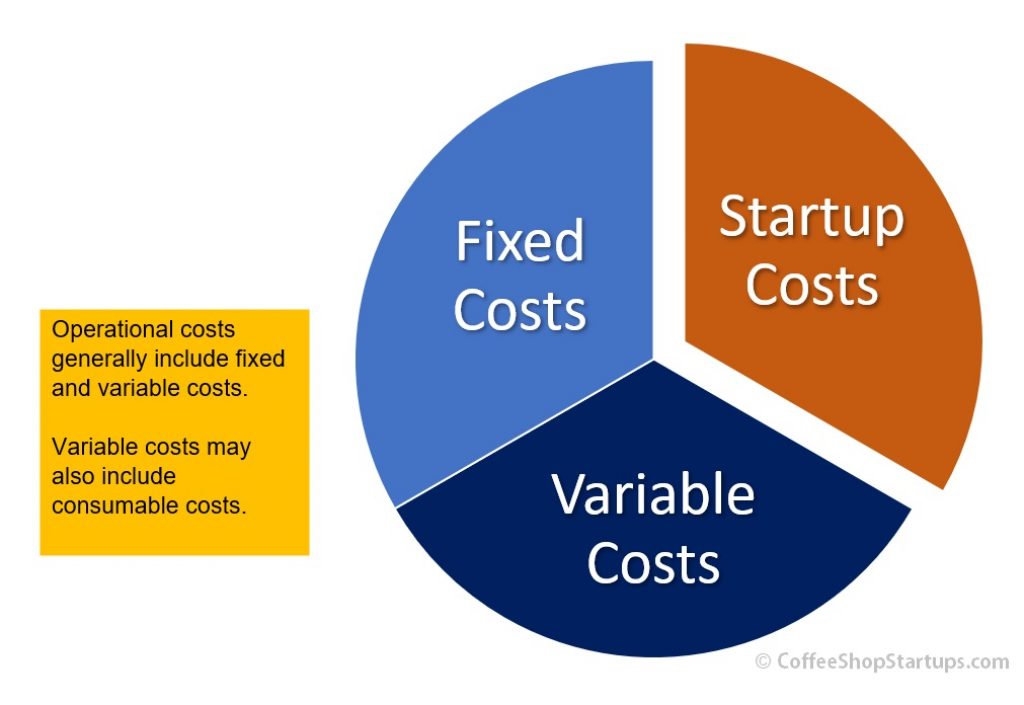
In order to calculate the cost of a coffee shop startup, we will list and define various coffee shop costs below:
Coffee Shop Startup Costs
These costs are solely associated with the money you need first to launch your coffee business. They often include the costs of branding, legal fees, administrative paperwork, security deposits, coffee equipment, building out your space, consultants, training, etc.
You may see these notated differently on your tax filings from your operational costs the following year that you opened your coffee shop. (You should consult a tax specialist for more information.)
Coffee Shop Operational Costs
These costs are required to keep your business running daily or month-to-month. They can be anything from the cost of your coffee beans, milk, payroll, utilities, and rent.
Your operational costs often include two general categories: fixed and variable.
Coffee Shop Fixed Costs
Fixed costs are costs that don’t typically change month to month. These costs can be your monthly rent, insurance premiums, security payments, a manager’s monthly salary, etc.
Your Coffee Shop Variable Costs
Variable costs fluctuate regularly depending on your sales volume, hours of operation, etc. These may include the number of coffee beans, cups, lids, barista labor hours, syrups, milk, sugar, napkins, etc.
Coffee Shop Consumable Costs
Consumable costs are simply those costs that are expended regularly because they are used up. For example, they could be anything from paper napkins, cups, lids, soap, disinfectants, bleach, towels, etc.
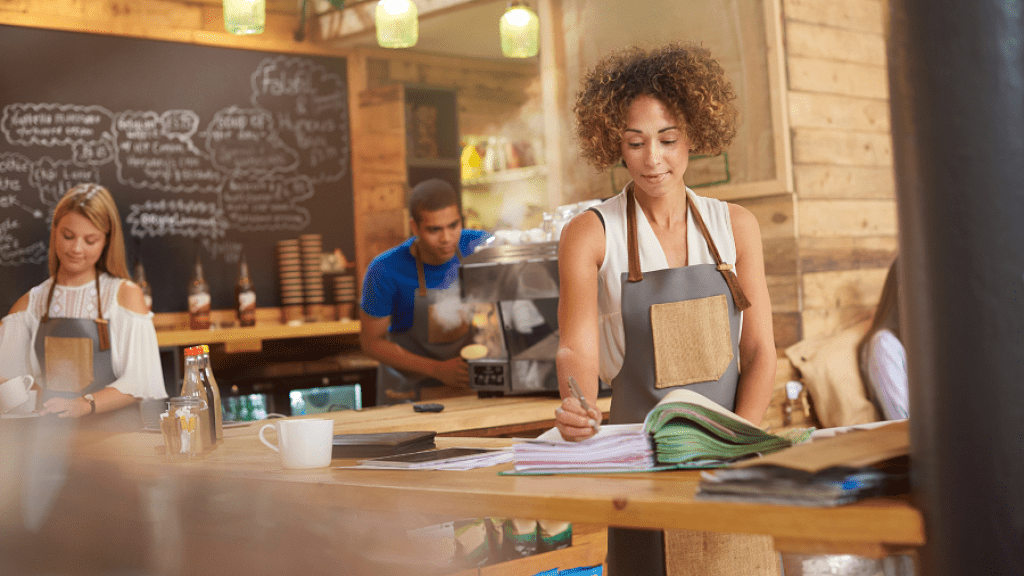
Coffee Shop Cost Breakdown
Calculating Your Coffee Shop Business Costs
Step 1 – Write a Coffee Shop Business Plan
By putting together a well-written business plan, you can determine – among other things – your concept, your financial projections. These will include your general overhead, coffee equipment costs, rental costs, payroll costs, and your break-even point and profitability projections.
By running these numbers, you can determine your return on your investment (ROI).
Additionally, a comprehensive coffee shop business plan will be important as you approach property managers and investors who want to understand your concept and see a detailed financial forecast for your proposed coffee business.
By understanding what you want and need, you’ll also be a better negotiator, reduce your costs, and save tons of time.
Step 2 – Determine Your Coffee Shop Menu
It may not seem obvious initially, but your coffee shop menu plays quarterback to your entire coffee shop budget.
Without knowing your menu first, your most effective planning will grind to a halt.
For example, your coffee menu and prices affirm who your target customer will be. Therefore, in essence, your menu really determines your ideal location.
Additionally, your menu will determine what equipment you are going to purchase. Your equipment requires a certain amount of space, installation, and people to operate it.
This impacts your lease, contract work, and hiring baristas. Don’t forget that if you want to open a full-fledged café with a kitchen, you will be under greater scrutiny from the health department to get a permit.
Because of all this, it’s fair to say that what's on your coffee shop menu board is the center of your entire coffee budget.
Step 3 – Choosing Your Coffee Equipment
Your coffee equipment plays a big part in your upfront startup costs. If you finance or lease your coffee shop equipment, you’ll have to make monthly payments, including interest payments.
Coffee Shop Equipment Costs Include:
- Espresso Machine
- Grinders (one for decaf and one for regular espresso)
- Scales
- Metal Pitchers
- Scales
- Toaster Ovens
- Refrigerators
- Freezers
- Ice-Makers
- Coffee Brewers
- Display Cases
- Storage Racks
- Blenders
- Dish Washer
- Grease Trap
- Point-of-Sale System
- Power Generator (mobile coffee business)
Coffee Shop Consumable Costs
Consumable supplies may be categorized as equipment as well. These items are regularly used up.
These may include towels, soap, disinfectants, and bleach. They may also include things like boxes, bags, napkins, postage, etc. All of these can add up to increase your variable costs as time goes on. Being mindful of waste can lead to significant savings with your consumables.
As you ramp up your inventory initially and determine what works best for your coffee shop, you’ll probably spend a little more during a “trial-and-error” period. This is normal. The more experience you have, the less waste you’ll most likely experience.
Maintaining your inventory and budget management will help you make better decisions and save money. Your coffee shop POS system can come in handy in helping you manage your inventory.
Step 4 – Finding the Right Physical Location & Space
Real estate costs will play a big role in how much your coffee shop will cost – with your upfront startup costs and operational costs.
Your location rental costs are determined by your square footage (or square meters in Europe or elsewhere).
The cost per square foot helps compare the cost differences between locations.
If you decide to lease your coffee shop space, you’ll be paying for a security deposit, monthly rent, and possibly other expenses as defined in terms of your lease. Other rental scenarios may include paying a certain percentage of your gross sales to the property manager monthly.
Some common expenses and rent payments are pest control, security service, trash, taxes, and building maintenance fees.
These costs should be tallied together to determine your overall rent-to-earnings ratio.
Step 5 – Budget for your legal & administrative costs
There are often nominal but important fees and costs associated with setting up your business.
These costs and requirements should not be overlooked. Make sure they get into your budget planning.
These costs may include:
- The cost of setting up your coffee shop LLC
- Paperwork that may require hiring a lawyer or legal service
- Applying for city and state licenses and permits
- Health department proposals and inspections
- Buildings department proposals and inspections
Step 6 – Budget for Your One-time Coffee Shop Startup Expenses
As part of your startup costs, you will have various one-time expenses. Not counting your equipment costs, these other one-time expenses are important to your business and expensive. Overlooking them might undercount your financial needs. Like other costs associated with starting your coffee shop, they can add up quickly.
These one-time coffee shop costs may include:
- Any security deposits
- Consulting fees
- Website development
- Security System
- Point-of-Sale (POS) System
- Furniture & fixtures
- Exterior signs
- Exterior lighting
- Indoor and exterior menu board
Step 7 – Budget for Hiring Staff
You can work it yourself if you own a small coffee kiosk or coffee cart. However, there may come a time when even your small coffee shop will need to hire staff or baristas.
Many times, you will have to hire multiple staff members.
The cost associated with staff can add up quickly. For example, hiring two or three baristas to work 30 hours a week.
That’s 90 hours @ your hourly rate.
Additionally, you may have to pay certain benefits mandated by the state, including workers comp insurance, taxes, and medical leave. Hiring staff can be expensive, which is another reason to be extra diligent with your hiring choices. Your barista hiring decisions will be a key factor in your coffee shop success. Keeping your baristas trained and engaged in your business will lead to higher customer satisfaction, higher revenue, and a better work environment.
Step 8 – Marketing and Promotion Costs
The marketing and promotion of your business may have one-time or ongoing costs. A variety of benchmarks are given for new retail businesses. Consider budgeting 10% of your net revenue to sustain marketing and promotional costs. This would especially be important for new coffee businesses.
These costs may include:
- Your website development
- Coffee shop grand opening
- Designing and printing business cards
- T-shirts
- Signs or posters
- You may decide to hire a social media consultant or graphic designer.
You’ll want to make sure to include each of these costs in your budget.
Step 9 – Ensure Cash-on-Hand to Cover Expenses Until Profitability
Like any other business, your coffee shop will probably not reach profitability overnight. And your business may take time to ramp up to its full potential.
Without cash, your business will grind to a halt pretty quickly. So, you will want to have a certain amount of cash on hand for various expenses.
This may include contract labor, barista payroll, inventory and supplies, utilities, etc.
Depending on your coffee shop concept, you will want enough cash on hand to sustain your business for at least six months' worth of expenses. Together with your existing sales and careful budgeting, this financial cushion will help you ensure stable growth until you reach profitability.
Bear in mind that a six-month cushion may not be enough. It depends on your concept, operational costs, and your level of sales.
If your expenses are $2000 a month, you will want to factor in another $12,000 of cash on hand in your budget.
Other Miscellaneous Coffee Shop Expenses:
Many costs have the keen ability to sneak up on you. They add up quickly or hit you just as you’re not suspecting it. As a new coffee shop owner, these costs can send you scrambling to find new money. Prepare for these additional coffee shop startup costs, and you'll be in a much better position.
These costs may include:
- Lump interest payments on loans
- Taxes
- Consultant fees
- Equipment maintenance fees
- Barista training
- Shipping costs
- Moving expenses
- Over existing debt
How Much Does It Cost to Open a Coffee Shop?
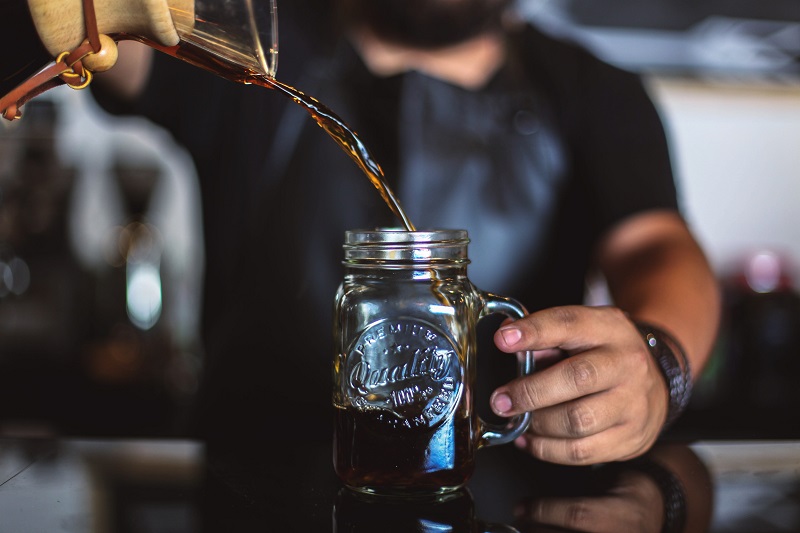
Coffee Shop Startup Costs
Moving from Costs to Profits
Now that we’ve talked about costs, let’s talk about profits!
Each cost mentioned so far is really an investment in your business. You are ultimately spending money to enjoy a return.
Whether you buy an espresso machine display case, hire a barista, or design a coffee sign – it’s all geared for the ability to make money.
Your ultimate goal is to create a profitable business. Just how profitable a coffee shop is entirely up to you.
What is a good profit margin?
If you are asking, “what is a good profit margin for my coffee shop?” – You’re asking the right question!
Certainly, profit margins vary from industry to industry, but there are generally accepted standards for profitability.
Typically, a 10% net profit margin is considered average or good. In comparison, a 20% profit margin is considered very good.
In many cases, anything under 5% may be considered poor margins. Of course, when you are just starting a coffee business, you may not reach profitability for the first year or two.
With profit margins, consider that margins differ:
- from industry to industry;
- between new businesses and older businesses.
How do you calculate the profit margin?
While not in the scope of this article, we’ll briefly mention some strategies to calculate your profit margins. For starters, you can determine your net income by determining your net sales and then subtracting your costs of goods sold (COGS).
Basically, take your income and subtract the costs. Then, you will divide that number by your net sales.
Net Sales – Cost of Goods Sold ÷ Net Sales
= Gross Profit Margin
For example:
Let’s say your net sales are $1,000 for the week. Your cost of goods sold (COGS) is $600. By plugging the numbers into the equation, you'll get this:
$1000 – $600 = $400/$1000 = .4 or 40% Gross Profit Margins
This is a very simplified look at costs, but hopefully, it will help introduce you to how you can look at your profitability. For another in-depth look at potential costs for your coffee shop, read our post, How to Determine the Cost of Selling 100 Coffees.
The Cost to Open a Coffee Shop:
Your Potential Coffee Shop Funding Mix
There are a variety of ways to obtain the money to start your coffee business. Many times, your money will come from different sources. We like to refer to these sources as your funding mix.
Here are some examples of funding sources:
1. Personal Savings
2. Credit Cards
3. Borrowing (institution or a personal loan)
4. Bringing in investors/partners
5. Crowdfunding
These are the general funding pools that you will need to draw money from. Before you borrow or bring in potential investors, you want to determine:
1. How much money do you need to open your coffee shop?
2. How much money you can obtain from each pool
3. Develop your financial forecasts to know when you reach your break-even point.
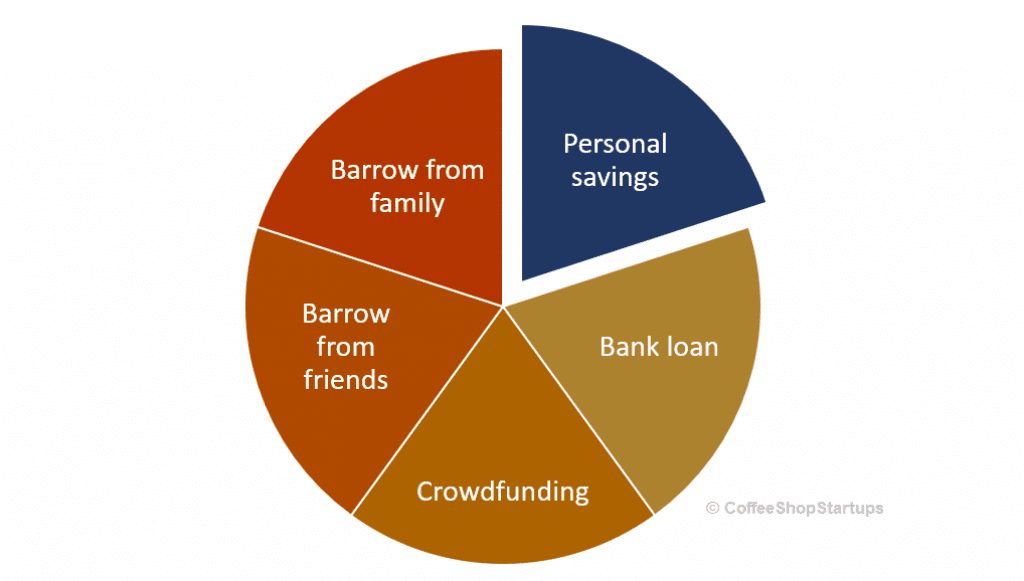
Let us take a look at the pros and cons of using various finance pools to cover the costs of opening a coffee shop. Consider the table below.
| Funding Type | Pros | Cons |
|---|---|---|
| Personal Savings | Funds without going into debt | Higher personal financial risk |
| Credit Cards | Immediate Financial Resources | Must payback debt with high interest rates |
| Borrowing (bank or a personal loan) | Cash Funding | Must payback with variable interest rates |
| Bringing in Investors/Partners | Cash Funding | Potential loss of company control (diluted decision making power) |
| Crowdfunding | Funds without interest | Some fees, You need funds to invest in a marketing campaign, You may have to pay enticements |
![]()
How Much Does It Cost To Start a Coffee Shop?
Related Coffee Shop Cost Questions:
What drives up the cost of coffee shops?
At every turn, your coffee shop costs could go up. It will be important for you to stay on top of your budget and push back on your costs ballooning in every area of your business.
Developing the details of your coffee shop concept before spending any real money will be a worthwhile investment.
With that said, a lack of planning can easily drive up your coffee shop's cost.
Whether you buy the wrong coffee equipment, rent a poor location, hire too many staff, develop a too expensive concept, or waste inventory, costs can easily rise.
Things that drive up the costs of a coffee shop:
- Lack of planning
- Unfavorable lease terms
- Paying for Waiting (Contractor workers, permits)
- Waste
- Remodeling costs
Are there strategies to reduce the cost of starting my coffee shop?
Reducing your coffee shop costs at every point may just be one of the most important roles you’ll play in starting your coffee business.
The first important step is to develop your business plan thoroughly before you spend any real money.
Ask yourself, does your concept and coffee shop cost analysis seem to work together – or does it need adjusting? If so, it’s okay to make adjustments!
Will the concept (and your location, menu, etc.) lead you down a potentially expensive path? If you think you might be headed for spending more than you think you can afford, slam on the brakes.
When you develop your business plan and budget, take a look at things you might be able to do without. Do you really need an expensive 4-group espresso machine – or could you make things work with a 2-group machine?
Your estimated monthly rent will be a big factor in your total costs. What steps can you take to reduce your cost here? Does it make better sense to open up a drive-thru coffee stand or set up a mobile coffee business instead?
Training also reduces your operating costs. Training your baristas will have enormous benefits in delivering a better product, experiencing less turnover, and less waste.
There are several ways to reduce your costs. The key is to develop an outlook or attitude that stems from simplicity, organization, and dedication to reducing waste.
Further Reading: Is Starting a Coffee Shop Expensive?
Is a coffee shop business worth the costs?
A well-operated coffee shop with a steadily growing business can be well worth the costs.
If your business makes sales every day, it can grow your business into a profitable one. Consider your financial forecasts. You will want to monitor whether you can bring in your anticipated revenue. A small coffee shop makes $500 daily for six days a week in the United States. That would be $12,000 per month in revenue. If your costs are about 2/3 of your revenue, is it worth it? I would say so.
How much money can I make with a coffee shop?
The amount of money you can make at a coffee shop or coffee business can be significant. Your revenue can be a life-changer. But where there are significant financial rewards, there are also financial risks too. It’s fair to say that some years will be better than others.
The revenue and net profits your coffee shop brings in depend a lot on the volume of sales, customer base, your menu and related price points, and your cost. For more information on how much money you can expect to make with a coffee shop, read our post, How Much Money Do Coffee Shop Owners Make?
What are your coffee shop's monthly expenses?
When determining your coffee shop startup cost breakdown, there are two general pockets to consider: your startup and operational costs. Your coffee shop startup costs are your initial costs to launch your coffee business. These could be anything from your business setup costs to your logo, equipment, and build-out costs. As described above, operational costs are everything it takes to run your business.
For many, looking at operational costs broken down by month is helpful. Your monthly costs will likely be most of your operating costs but could also include some startup costs.
From personal budgeting, we are used to figuring out costs per month. We commonly use our monthly budget to assess our rent or mortgage payments, car payments, and cell phone bills. Therefore, it is fair to ask how much a coffee shop costs per month.
Hence, figuring out our monthly costs to run a coffee shop makes sense.
What coffee shop monthly expenses should I expect?
Every month, coffee shop owners can expect certain expenses. These vary depending on your ultimate concept. Yet, some expenses are generally the same from one coffee shop to the next. I will list common coffee shop monthly expenses below.
- Rent – your monthly lease cost
- Labor – Salary, hourly wages, and taxes.
- Insurance – General liability, commercial auto.
- Inventory – Coffee, wholesale food, milk, etc.
- Supplies – Cups, lids, napkins, spoons, etc.
- Security – You may need to pay a business association fee for security services.
- Utilities – These fluctuate, but they are billed out every month.
- Interest on loans – This may likely include principal payments.
Can you afford your own coffee shop at this time?
You still may be unsure if you can afford your coffee shop now. Money – and access to money – is the single biggest factor when deciding to invest in a coffee business.
You will have to assess your finances and determine if opening a coffee shop leaves you vulnerable. You may not want to jeopardize your well-being to start any business.
There are plenty of things that you can do today without spending any money on a coffee shop. Planning, learning, and exploring retail coffee come to mind.
If you are on a minimal budget, consider reading posts we’ve written, Low-Cost Coffee Shop Ideas, or How to Start a Coffee Shop on a Budget.
Is your coffee shop lease worth the cost?
The less money you spend on rent, the more you will have to invest in your coffee shop growth (advertising, staff, paying back loans more quickly, and, of course, paying yourself!).
You’ll have to determine if the rent you will be paying is truly worth the cost. Is there something unique and special about the location that is worthy of you renting there? Again, you must incorporate your concept, customers, menu, and other qualitative factors that space provides.
Once you’ve signed your property lease, you’ll next have to consider the costs to design and construct an appropriate layout. Let’s talk about that next.
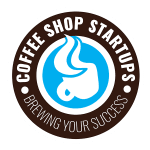
Ready to Get Started?
Start Your Dream Coffee Shop Business
Starting a coffee shop is exciting, but it can also feel overwhelming. Where do you start? What steps should you take? How do you avoid costly mistakes? That’s where the Professional Coffee Shop Startups Kit comes in. It’s designed to give you a clear, practical roadmap to opening a successful coffee business—without wasting time or money on guesswork.
Inside, you'll find:
![]() Expert interviews with real coffee shop owners and business experts.
Expert interviews with real coffee shop owners and business experts.
![]() An On-Demand 37-lecture course covering everything from business planning to daily operations.
An On-Demand 37-lecture course covering everything from business planning to daily operations.
![]() Editable coffee shop business templates, financial documents, checklists, and planning tools to keep you on track.
Editable coffee shop business templates, financial documents, checklists, and planning tools to keep you on track.
![]() A step-by-step startup guide that walks you through concept development, permits, branding, and more.
A step-by-step startup guide that walks you through concept development, permits, branding, and more.
![]() Cost-saving strategies to help you launch your coffee business on a budget.
Cost-saving strategies to help you launch your coffee business on a budget.
Whether planning a small coffee cart or a full-scale café, this kit is built to help you start confidently. Join the thousands of successful coffee entrepreneurs who started with a dream and a great plan. Your journey to coffee shop greatness begins right here!
Comprehensive. Proven. Affordable.
The Professional Coffee Shop Startup Kit
(Instantly Delivered To You)
* The information on this page is for educational purposes only. We do not offer legal or investment advice.


